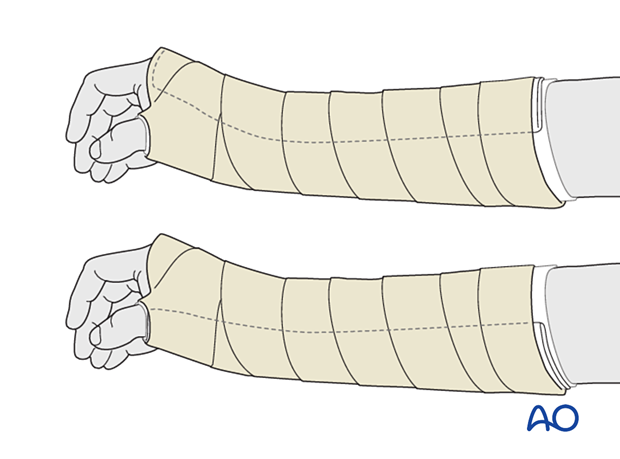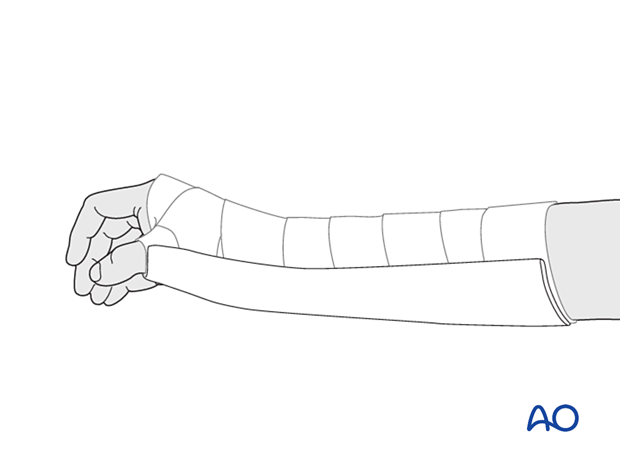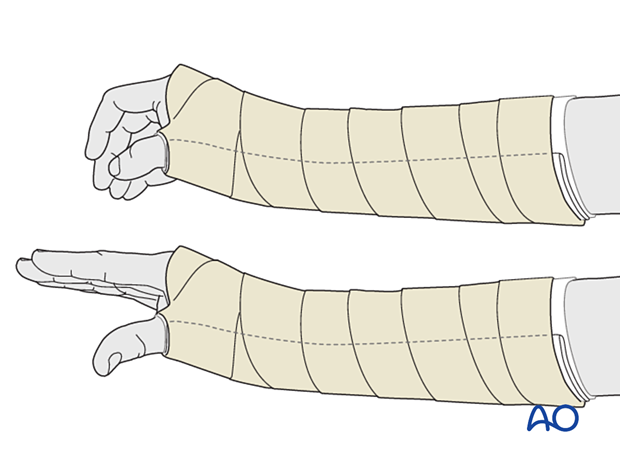Splinting
1. General considerations
Splintage of the injured wrist, hand, and fingers is recommended for:
- The support of damaged tissues to permit the early (inflammatory) healing phase to be established without repeated trauma
- The reduction of postoperative swelling, which otherwise impedes tissue perfusion
- The restoration of graduated exercises appropriate for the phase of healing
These factors contribute to optimal pain management. This is essential for the appropriate restoration of movement and reestablishment of functional activities.
The specific splintage type is determined by the particular injury pattern.
A splint may be added to the forearm and hand either dorsally or palmarly. Application on the opposite side of the surgical approach used during ORIF is recommended for easier wound care.
The wrist is slightly extended. For further stability, the proximal phalanx of the thumb can be included in a position of slight opposition (“scaphoid splint”).

2. Splint application
Padding
Pad the arm and hand to avoid pressure sores, especially on the distal ulna and styloid process of the radius.

Plaster application
Apply a plaster splint in a standard manner.

Add elastic bandage to hold the splint in position.
Make sure that the splint and bandage do not extend too far distally, both at the levels of the metacarpophalangeal (MCP) joints of the fingers and the interphalangeal joint of the thumb. The splint must allow complete movement of these joints.













